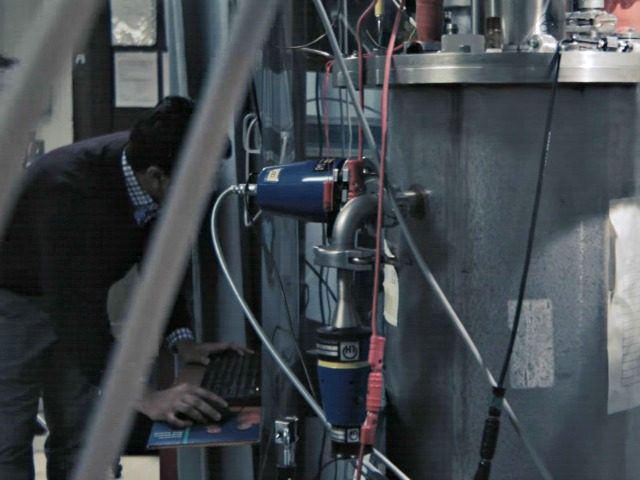The only sample of metallic hydrogen, an incredibly rare metal that was first created by Harvard scientists in January, has been lost in a laboratory accident.
Referred to as “the holy grail of physics,” it was formed by subjecting liquid hydrogen to pressure greater than that at the Earth’s core. The pressure broke down the molecular hydrogen to transform it into an atomic solid. Metallic hydrogen has been theorized to perform an important role in future space travel as a new propellant, and when used as a superconductor, could potentially revolutionize medicine, energy, and transportation technology.
Unfortunately, one of the two diamonds used to hold the tiny piece of metal in a vice-like grip was obliterated while the sample was being measured by a laser, and the sample was completely lost in the accident, according to The Independent.
Professor Isaac Silvera, the lead researcher on the Harvard project, was reported as saying that his “heart fell” when he realized the gravity of the situation. He first heard a small clicking noise as the laser traveled over the diamond, indicating its disintegration.
“I’ve never seen a diamond shatter like that. It was so powdered on the surface, it looked like baking soda or something like that,” the professor said. “I didn’t believe it was diamond, it was such a fine powder.”
Given that the sample had a diameter of around a fifth of the average human hair, it has been impossible to find after the incident. “The sample is in the wreckage some place, or it’s not meta-stable, and it disappeared, it turned into a gas,” Silvera said. “If it was meta-stable and if it could withstand the shock of a catastrophic failure, it would still be in the gasket.”
However, this has prompted some other scientists to speculate that the metallic hydrogen never existed at all. Writing in the scientific journal Nature, fellow physicists wondered if in fact Silvera had mistaken the reflective nature of the aluminum used to protect the diamonds from the hydrogen for a positive result. Silvera responded that there is “no doubt it is metallic… I’m completely confident of the measurements we have made.”
There is currently no information on when the Harvard scientists will attempt to produce metallic hydrogen again.
Jack Hadfield is a student at the University of Warwick and a regular contributor to Breitbart Tech. You can follow him on Twitter @ToryBastard or on Gab @JH.

COMMENTS
Please let us know if you're having issues with commenting.